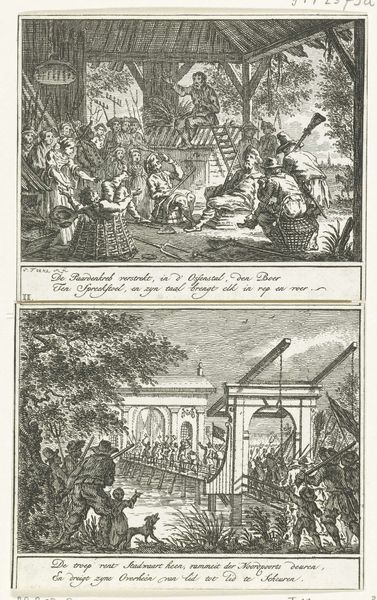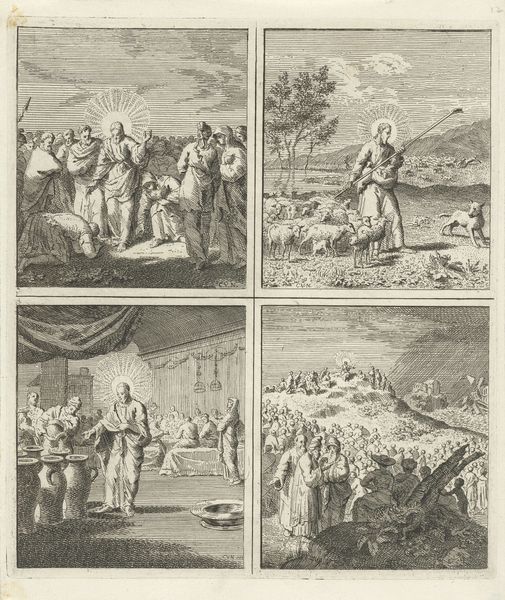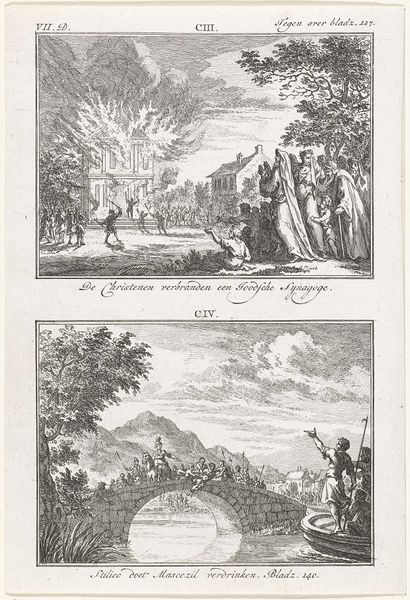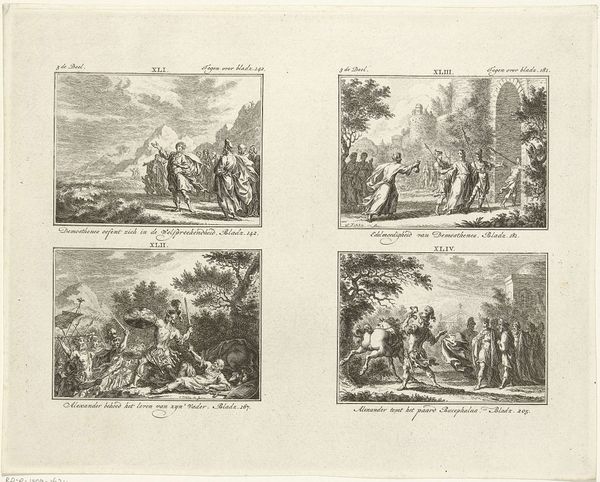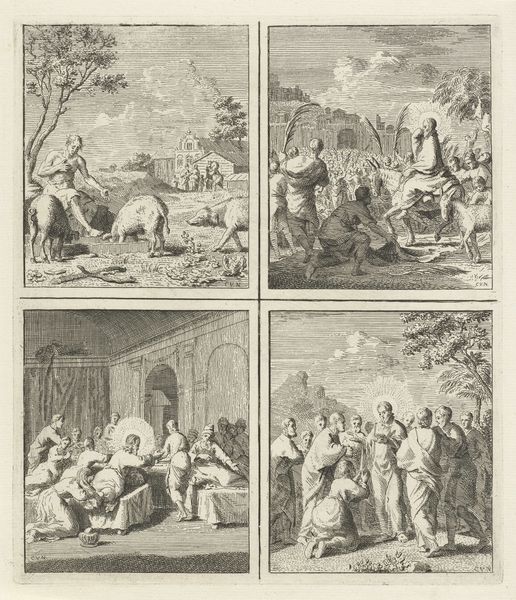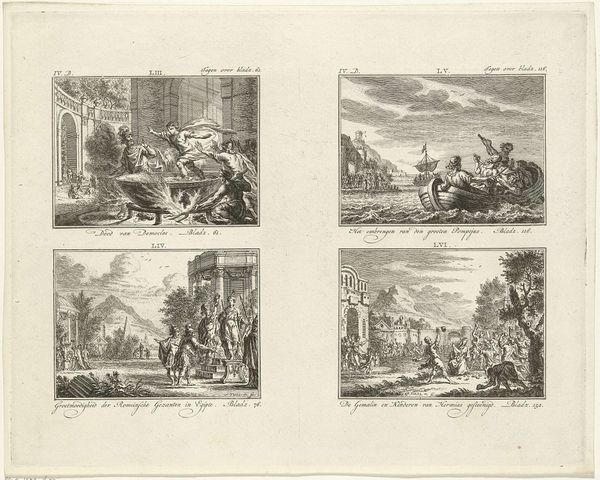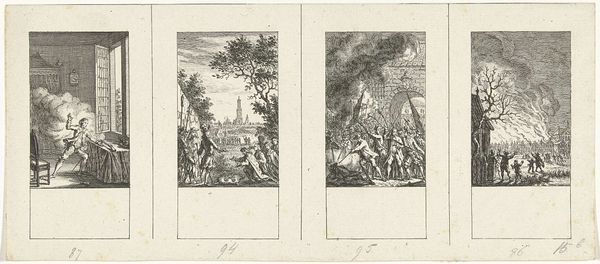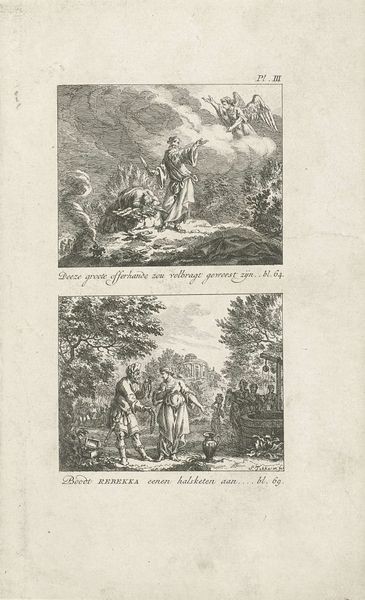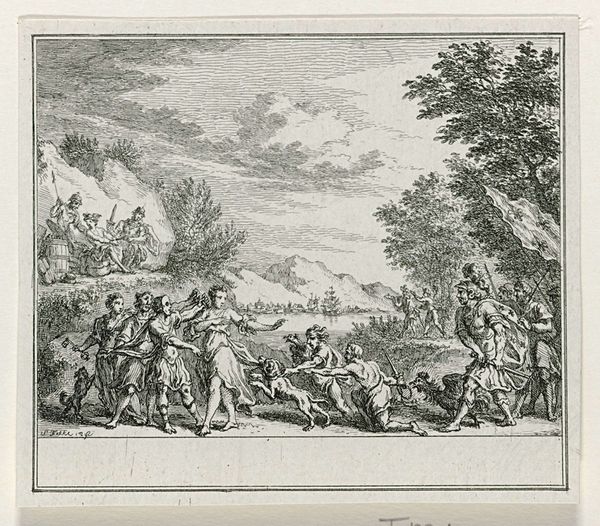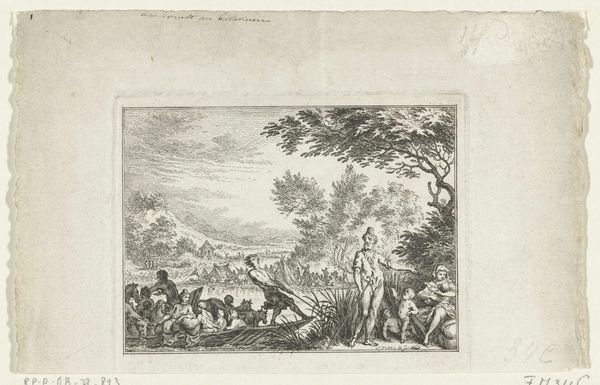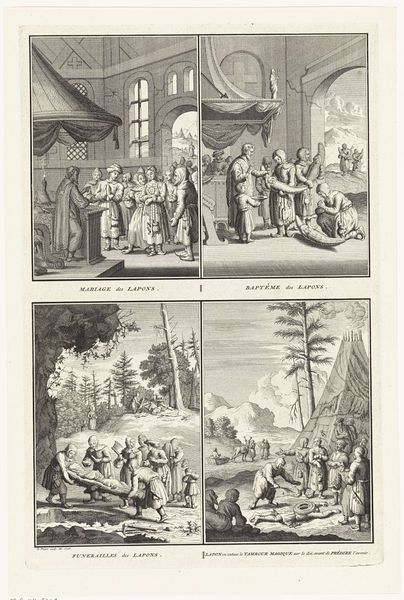
Monniken aan de schandpaal verbrand en de wrede daden van Paus Urbanus VI 1722 - 1784
0:00
0:00
print, etching
#
narrative-art
#
baroque
# print
#
etching
#
figuration
#
history-painting
Dimensions: height 175 mm, width 121 mm
Copyright: Rijks Museum: Open Domain
Editor: Here we have Simon Fokke’s print, "Monks burned at the stake and the cruel deeds of Pope Urban VI," created sometime between 1722 and 1784. It’s a stark image, a historical narrative depicted in etching, but quite a gruesome one. What symbols jump out at you in this work? Curator: Immediately, I’m struck by the stark duality embedded in the imagery. Fire, of course, often represents purification or destruction. What do you see here? The monks, elevated on platforms, becoming a spectacle... Editor: Right. It's clearly intended to provoke a strong reaction, a condemnation. Curator: Precisely. Notice how Fokke uses Pope Urban VI’s figure, almost radiating outwards and commanding the scene, contrasting to the relatively muted figures of those being persecuted? The composition invites reflection on power, religious conflict and manipulation. And what of the lower scene? Editor: That one shows what appears to be more brutality being inflicted upon individuals. Curator: It echoes a similar narrative; power exerting itself through violence. These images weren't simply about depicting events; they were intended to tap into deeper cultural anxieties surrounding authority, faith, and justice, don't you think? What emotional responses might audiences in that era had while observing these works? Editor: I imagine they would've seen the events and questioned the figures who they might have considered corrupt? These works act like records or a warning of things that might go wrong if figures abuse their positions. Curator: A record, a warning, and perhaps even an invitation to challenge existing power structures. Visual communication has always shaped cultural memory and continuity, sometimes brutally. It highlights how art is always inextricably linked to society, both acting as a mirror and a call for change. Editor: Thank you! That’s given me a lot to consider in terms of the visual symbolism, and the work's significance in shaping opinion and our cultural memory.
Comments
No comments
Be the first to comment and join the conversation on the ultimate creative platform.

